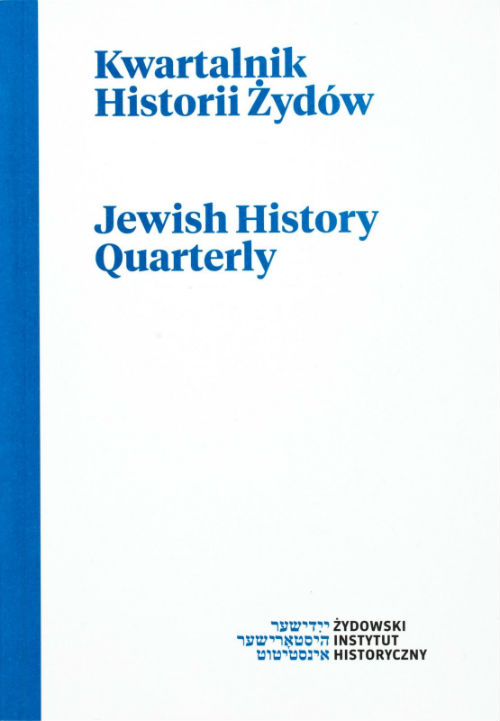Waad Arba Aracot i amsterdamska biblia w jidysz. Historia pewnej karty tytułowej
Waad Arba Aratsot and Amsterdam Bible in Yiddish, History of a Title Page
Author(s): Jan Doktór, Magdalena BendowskaSubject(s): History
Published by: Żydowski Instytut Historyczny
Keywords: Jewish printing shops; Council of Four Lands; Old Testament; Yiddish
Summary/Abstract: In 1679, two Jewish printing houses in Amsterdam, one owned by Josef Athias and the other by Uri Fajbusz, published huge print runs (some 6,000 copies each) of a Bible translated into Yiddish, to be distributed chiefly on the Polish market. Both printers secured various privileges for their publications, guaranteeing them exclusive rights. Uri Fajbusz had a privilege granted to him by Polish King John III Sobieski, guaranteeing exclusive distribution rights for his edition in Polish lands for a period of twenty years, and a privilege—a forged one, as it turned out later—granted for a period of ten years by the Jewish Council of Four Lands (Waad Arba Aratsot). Josef Athias had a privilege granted to him for a period of fifteen years by the States-Provincial of Holland and West Frisia, as well as the approval of the Council of Four Lands. However, both printers fell into financial problems as the Polish market remained off-limits for both editions: Athias’s Bible could not be distributed because of the royal privilege, granting exclusive distribution rights to Fajbusz, while Fajbusz’s edition did not have Waad’s (genuine!) approval. King John III Sobieski, whose ambition was hurt, decided to compensate the ineffectiveness of that privilege to Fajbusz. In 1690 roku Uri Fajbusz received a royal privilege to open a Hebrew printing house in Żółkiew, which was John III’s private town. The privilege, granted for an indefinite time, guaranteed him and his descendants exclusive right to print Jewish books in the Republic of Poland. The Żółkiew printing house preserved its monopoly for more than seventy years. Josef’s son, Immanuel Athias, tried to sell the Bible again with a new title page, on which he also was mentioned as the printer. So far, the only known copies of that edition were those with the second, later title page, dating back to 1687. However, it was evident that there had to be the original title page, on which Josef Athias was given as the printer, and the year of printing was given as 1679. This was what Shabtai ben Josef Bass wrote in his bibliography. It is precisely such a copy, with a title page on which there is no Immanuel yet, only his father Josef Athias, with the year of printing given as 1679, has now been discovered in JHI collections.
Journal: Kwartalnik Historii Żydów
- Issue Year: 233/2010
- Issue No: 01
- Page Range: 89-100
- Page Count: 12
- Language: Polish

